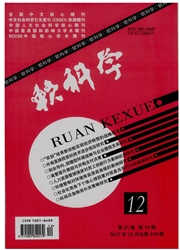

 中文摘要:
中文摘要:
基于协同学理论,构建由技术创新、节能效率和减排效率三个子系统组成的协同发展评价模型,并进行实证分析。六大高耗能产业2004~2014年总体协同度呈现上升状态,但各产业均出现协同度下降的年份,主要是研发投入不稳定、企业管理疏漏等造成各子系统有序度降低,导致产业协同度降低。节能效率和减排效率子系统之间的协同度高于其他子系统之间的协同度,是由于技术创新子系统有序度低,导致与技术创新子系统有关的协同度都较低,表明提高协同发展水平的关键在于提高技术创新的发展水平。各高耗能产业需要针对各自的短板进行改进,提高系统总体的协同度。
 英文摘要:
英文摘要:
Based on synergetic theory,this paper constructs a synergetic development evaluation model of three subsystems,these are technology innovation,energy saving efficiency and emission reduction efficiency. And then,it makes an empirical analysis of it. Results show that,the overall synergy degree of every industry from 2004 to 2014 was rising,but for every industry,it also exists decline in some years. The unstable RD input,enterprise management oversight and weak supervision are the main reasons that caused the order degree of each subsystem declined,which finally lead to the industry synergy degree declined. Furthermore,the synergy degree between energy conservation efficiency and emission reduction efficiency subsystem are higher than others. The reason was that the technology innovation subsystem's low order degree caused all the synergy degree were lower that related to it. Therefore,the key to improve the synergetic development level is to improve the technology innovation development level. And each energy-intensive industry needs to overcome their weakness to increase the synergy degree of overall systems.
 同期刊论文项目
同期刊论文项目
 同项目期刊论文
同项目期刊论文
 期刊信息
期刊信息
